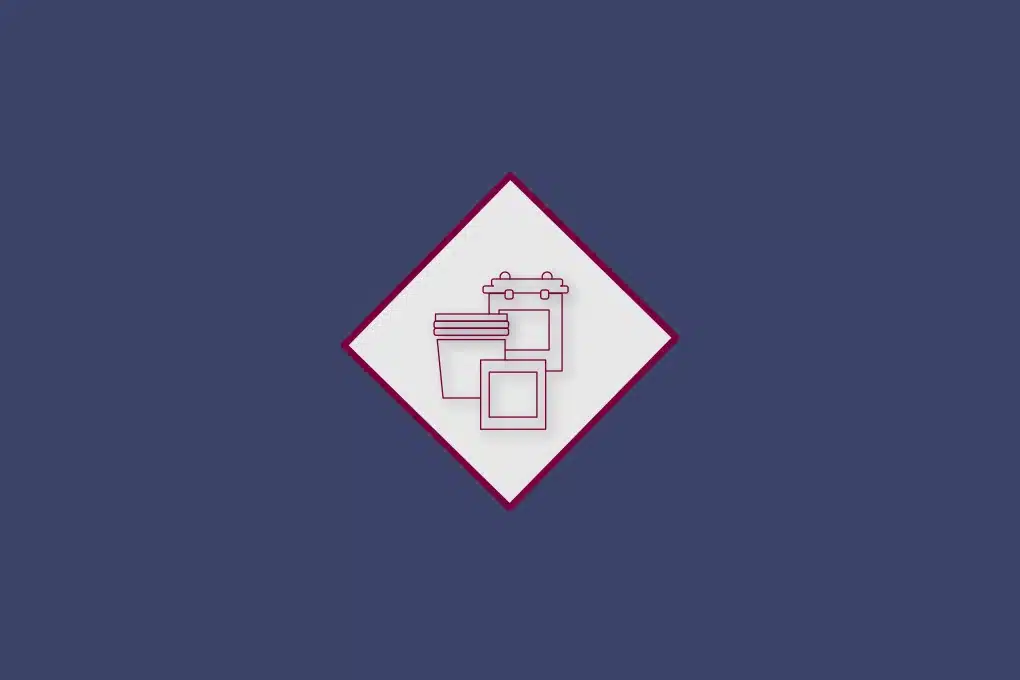An Introduction to DSEAR
DSEAR stands for the Dangerous Substances and Explosive Atmospheres Regulations 2002 and is, in effect, a risk assessment that aims to elminiate risks. DSEAR requires employers in the UK to eliminate risks from fire and explosions associated with explosive atmospheres, flammable substances and substances corrosive to metals.
Health and Safety matters legally, so any UK site that manages a significant quantity of flammable gas, vapour, or combustible dust or powders that have the potential to form an explosive atmosphere will fall under the Dangerous Substances and Explosive Atmospheres Regulations (DSEAR). DSEAR regulations were passed in the UK in 2002 as a result of two European Directives: The Chemical Agents Directive (98/24/EC) and the Explosive Atmospheres Directive (99/92/EC). From 2015, DSEAR also covers gases under pressure and substances that are corrosive to metals.
So DSEAR is, in effect, a risk assessment that requires the assessment of fire and explosion risks in the workplace. As with all risk assessments in both process and occupational safety, for there to be risk there must be a hazard present. For fire and explosive risks, the presence of dangerous substances, flammable atmospheres and effective sources of ignition are usually the major hazards present.
Is DSEAR a legal requirement?
DSEAR regulations are a legal requirement that both employers and the self-employed must adhere to protect against the risk of fire and explosions in the workplace.
Under DSEAR, employers are required to assess all sites where a hazardous environment (dangerous substances, flammable/explosive atmospheres and effective sources of ignition) is present. For example, areas like gasworks and furnaces, refineries or foundries, and storage tanks for volatile products like petrol are all examples of where such hazards may be present.
Many industries do not manage substances classified as flammable, for example, woodworking shops or food manufacturers, but many powders and dust are combustible (for example wood dust, sugar, flour etc) and are capable of bursting into flames or exploding. Hence the DSEAR regulations also apply to these processing industries. The regulations apply simply because of the presence of flammable or explosive materials and combustible materials whether these materials are present in an industrial manufacturing premise or a DIY retail business.
DSEAR regs also cover the safety of members of the public who may be put at risk by work activities.
What are dangerous substances?
Dangerous substances are substances used or stored at work that could, if not properly controlled, lead to potential hazards when present in explosive atmospheres. DSEAR compliance, therefore, requires that the risks from such dangerous substances be removed or controlled to protect employees and the general public from explosions and fire.
Dangerous substances may include flammable gases, mists or vapours or combustible dust. Examples found in workplaces include:
- solvents
- paints
- flammable gases
- dust from machining and sanding operations
- dust from foodstuffs
- pressurised gases
- flammable liquids
What does DSEAR define as a workplace? (Legally)
DSEAR regs define workplaces as ‘any premises or parts of premises used for work’. This can include industrial and commercial properties, land and offshore operations, construction sites, vehicles, common areas in shared buildings, private and public roads and domestic properties (if utilised for work).
However, it must be noted that some requirements of DSEAR do not apply to specific industries in specific areas. An example of this is offshore oil production. If you are unsure if your workplace must follow the DSEAR regs, it is always best to speak to a competent person to ensure that you are legally covered.
DSEAR and HAC in the workplace
Within a workplace, DSEAR looks to define where an explosive atmosphere may or may not occur. By defining potentially hazardous zones, special safeguards can be created to protect businesses, people, the workplace and the environment. A Hazardous Area Classification (HAC) is used to identify the places and areas whereby control measures must be put in place (if necessary). The hazardous area classification makes up an integral part of the DSEAR Assessment. Many industries depend on accurate HAC documentation to determine the proper type of electrical and non-electrical equipment allowed in the defined zones of their facilities.
When does DSEAR apply and how do I know that there are dangerous substances present? (Introduction Summary)
DSEAR regulations will apply to you if:
- there is work being conducted by an employer (or self-employed person)
- a dangerous substance is present (or is liable to be present) at your workplace
- the dangerous substance could be a risk to the safety of people as a result of fires, explosions, potentially hazardous energetic events or through corrosion to metal – this can include thermal fluids and heat transfer systems
- Transporting flammable substances such as LPG
What does DSEAR require of employers?
DSEAR requires that employers must:
- discover what dangerous substances are present in their workplace and document what risks these substances present
- put control measures in place to remove those risks or to control them when removal is not possible
- put controls in place to reduce the effects of incidents involving dangerous substances
- prepare plans and procedures to deal with accidents, incidents and emergencies relating to dangerous substances on the premises
- ensure employees are properly educated and trained to control and/or deal with risks resulting from dangerous substances
- name and classify areas of the workplace where explosive atmospheres may occur and avoid ignition sources from unprotected equipment, for example, in those areas
Unravelling the key aspects of DSEAR regulations
DSEAR regulation 5 (Risk Assessment)
Regulation 5 of DSEAR deals specifically with risk assessments when a dangerous or potentially dangerous substance is present in a working environment. Regulation 5 states that DSEAR risk assessments should include:
- the hazardous properties of any potentially dangerous substance
- information on safety provided by the supplier, including information contained in any relevant safety data sheet
- activities, such as maintenance, where there is the potential for an elevated level of risk
- the effect of measures which have been or will be taken following DSEAR
- the likelihood that an explosive atmosphere could occur and its persistence
- the likelihood that ignition sources, including electrostatic discharges, could be present and become active and effective
- the scale of the predicted effects of a fire or an explosion
- any places which are, or can be, connected via openings to places in which explosive atmospheres could occur
DSEAR regulation 6 (Elimination or reduction of risks from dangerous substances)
Regulation 6 of DSEAR aims to eliminate and reduce the risk from dangerous substances wherever reasonably practicable. This includes, but isn’t limited to, the replacement of potentially dangerous substances or processes (if reasonably practicable) that may limit or reduce risk. This can include mitigation measures to control risks:
- reducing and keeping the number of dangerous substances to a minimum
- avoiding or minimising the release of a dangerous substance
- the control of the release of a dangerous substance at the source
- the prevention of the formation of an explosive atmosphere
- the application of appropriate ventilation
- ensuring that any release of dangerous substances that may give rise to risk is suitably and safely collected, contained, removed to a safe area, or otherwise rendered as safe as possible
- the avoidance of ignition sources including electrostatic discharges and adverse conditions which could cause dangerous substances to give rise to harmful physical effects
- the segregation of incompatible dangerous substances
To mitigate the detrimental effects of a fire, explosion or other harmful physical effects arising from dangerous substances, employers should seek to:
- reduce the number of employees that could potentially be exposed to risk
- avoid the propagation of fires/explosions
- supply adequate explosion pressure relief systems
- provide explosion suppression systems
- ensure that a plant or facility can withstand an explosion
- provide employees with adequate personal protective equipment (PPE)
- ensure that operations can safely manage, store and transport flammable materials
- ensure risk-reduction measures are consistently maintained to an adequate standard
DSEAR Regulation 7 (where explosive atmospheres may occur)
As DSEAR regs look to define where an explosive atmosphere may or may not occur, every employer must classify places at a workplace where an explosive atmosphere may occur. These areas should be classified as hazardous or non-hazardous zones (HAC).
- a site must be classified by area and hazardous zones must be clearly marked at their point of entry
- zoned areas to have suitably protected equipment and systems
- if a zone has recently been classified as hazardous, it must be verified by a person who is competent in the field of explosion protection
- the employer must provide appropriate clothing that does not give rise to electrostatic discharges
DSEAR Regulation 8 (dealing with accidents, incidents and emergencies)
To protect the safety of an employee from any inadvertent accidents, incidents or emergencies relating to dangerous substances, the employer must ensure that specific initiative-taking procedures are in place. These procedures should include:
- readily accessible and relevant safety information, warning systems, remedial actions and operational escape facilities should be in place in case of accidents, incidents and emergencies
- appropriate and accessible first aid facilities should be available
- safety drills must be prepared and regularly practised to ensure that all employees are aware of procedures following accidents or emergencies
- information for emergency services including relevant work hazards and hazard identification arrangements must be documented and ready to be at once communicated with emergency services. This is to ensure that emergency service personnel are aware of any potential hazards that may directly arise as a result of an accident
- ensure that warning and communication systems are active and well understood by all employees
- ensure that escape facilities are supplied and maintained so that in the event of danger, employees can leave endangered places promptly and safely
Employers should also ensure that any emergency has been fully mitigated and following on from the immediate aftermath of an incident or near-miss, should mitigate the effects of that particular event. Ultimately, employers must restore any process deviance to normality (as much as possible) and debrief employees that may have been affected by the incident. It must be noted that only those that are allowed to enter the affected area or are essential to repairs should enter and they should be provided with appropriate PPE and specialised safety equipment.
DSEAR Regulation 9 (information, instruction and training)
If a dangerous substance is present in the workplace, an employer must ensure that it is adequate and up-to-date information available to all employees and, as stated in Regulation 8, to emergency personnel. Regulation 9, therefore, states that employers must:
- create and display suitable and sufficient information, instruction and training on the proper precautions and actions to be taken by the employee to safeguard those present in their place of work
- employers must also provide suitable information that details the names, risks, data sheets and any legislative provisions of hazardous materials. These details must be made freely available at the place of work
- employers must include any significant findings of any risk assessments that have been undertaken
DSEAR Regulation 10 (identification of hazardous contents of container and pipes)
If containers and pipes are used in relation to dangerous substances, then they must be marked and are easily identifiable following relevant requirements (see Section 5 – Risk Assessments).
Furthermore, the employer must also ensure that employees and others are alert to the presence of any dangerous substance within the workplace so precautions may be taken. Dangerous substance identification will therefore help to avoid confusion over contents and will play a vital role in the avoidance of mixing dangerous substances.
Conclusion
DSEAR and other potentially explosive atmospheres regulations are enforced by the Health and Safety Executive (HSE) or by local authorities, depending on your work premises.
Although this short blog outlines some of the key requirements to follow DSEAR regulations, it must be remembered that the only way in which to ensure complete compliance is to have a competent person complete the assessment.
Sigma-HSE are recognised experts in DSEAR and have undertaken DSEAR risk assessments throughout the processing industries for many years. Our consultancy team are on hand to discuss your requirements and will collaborate with you to provide actionable safety solutions via a DSEAR risk assessment that is both cost and time effective.
If you are unsure about the fire and explosion capabilities of the substances managed at your facility, Sigma-HSE’s accredited testing laboratory can undertake all required testing, according to the relevant standards with a quick turnaround service.



